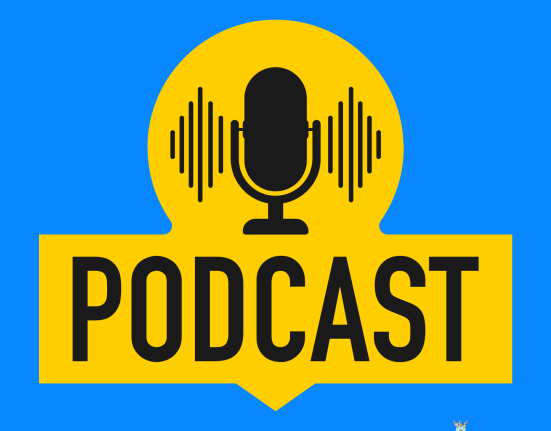Writing your first resume feels daunting, especially if you have nothing to showcase in the experience section. As a fresher, you might wonder how to make a resume for freshers and showcase your skills and experiences effectively when you have little to no professional experience.
But don’t worry—In this guide, I’ll walk you through the process step by step. We’ll address common challenges faced by freshers, like what to include and how to format it all. By the end, you’ll have a solid understanding of how to make a resume that stands out.
Well, I’m not going to waste your time by writing a section on “What is a Resume?”. Let’s start straight ahead with the facts:
Choosing the Best Format for a Fresher Resume
Picking the right resume format is the first step. It sets the tone for how your resume is read and can make or break the first impression. Here are a few pointers for you to look at:
1/ Reverse-Chronological Layout
Start with a reverse-chronological layout. This means listing your most recent education and experiences first. Employers prefer this format because it’s easy to follow and highlight your most relevant qualifications right at the top.
2/ Page Margins and White Space
Next, pay attention to page margins and white space. Aim for one-inch margins on all sides. This keeps your resume from looking crowded and makes it more readable.
3/ Professional Fonts and Sizes
Choose a professional font like Arial, Calibri, or Times New Roman. Stick to a font size between 10 and 12 points for the body text and use a slightly larger size (14-16 points) for section headings.
4/ Use of Larger Headings for Sections
Using larger headings helps to break up the text and guide the reader’s eye. Bold and slightly increase the size of section titles like “Education” and “Skills.”
5/ Limiting Resume to One Page
As a fresher, it’s best to keep your resume to one page. Employers spend only a few seconds scanning each resume, so make sure every word counts. A concise, one-page resume ensures you highlight only the most relevant information.
Essential Sections of a Fresher Resume
Your resume is a snapshot of your skills, education, and potential. And when you don’t have any experience to show, the other sections become much more important. Here are the essential sections you need to include to make it shine:
1. Header with Contact Information
Your resume starts with your contact information at the top. This includes your full name, phone number, email address, and location (city and state).
- Formatting Tips for Contact Info: Center your contact information at the top of the page. Use a slightly larger font for your name to make it stand out. Keep it clean and uncluttered, using a simple layout.
- Importance of a Professional Email: Use a professional email address that includes your name, such as john.doe@gmail.com. Avoid using nicknames or casual addresses like cooldude123@hotmail.com. A professional email address adds to your credibility.
- Adding Relevant Social Links: Include links to your LinkedIn profile, GitHub (for tech roles), or a personal website if it showcases relevant projects. Make sure your LinkedIn profile is updated and matches the information on your resume. This shows you have a professional online presence.

2. Resume Objective or Summary
Next, include either a resume objective or a summary. This section gives a quick overview of who you are and what you bring to the table.
Differences Between Resume Objective and Summary:
A resume objective is a brief statement about your career goals and how they align with the job you’re applying for. A summary, on the other hand, highlights your skills and experiences that make you a strong candidate.
Examples of Effective Objectives and Summaries:
- Objective: “Recent Computer Science graduate seeking a software development role to utilize my programming skills and contribute to innovative projects.”
- Summary: “Detail-oriented marketing graduate with internship experience in digital marketing, strong communication skills, and a passion for social media strategy.”
Tips for Writing an Effective Resume Objective
- Be Specific: Clearly state the position you’re applying for and how your skills align with the role.
- Highlight Your Strengths: Focus on your key skills and attributes that make you a good fit for the job.
- Keep It Concise: Limit your objective to 1-2 sentences.
Tips for Writing an Impactful Resume Summary
- Focus on Achievements: Highlight your most relevant accomplishments and skills.
- Use Keywords: Incorporate keywords from the job description to pass Applicant Tracking Systems (ATS).
- Be Brief: Keep your summary to 2-3 sentences or bullet points for clarity.

3. Education Section
For freshers, the education section is often the most substantial part of the resume. Detail your academic history, starting with your most recent degree.
Detailing Education History with Relevant Coursework:
List your degree, major, and the name of the institution. Include your graduation date or expected graduation date. Mention relevant coursework that aligns with the job you’re applying for. Although we don’t particularly want your degree to be a deciding factor, it is something you need to include in your resume. Example: “B.Sc. in Computer Science, University of XYZ, May 2023. Relevant coursework: Data Structures, Algorithms, Web Development.”
Listing Relevant Coursework: Choose courses that directly relate to the job you’re applying for. This shows employers that you have foundational knowledge in key areas.
Mentioning CGPA, Honors, and Awards:
If your CGPA is impressive (generally above 3.5), include it. Also, list any academic honors or awards to highlight your achievements.
Example: “CGPA: 3.8/4.0, Dean’s List (2020-2023), Academic Excellence Award.”

4. Skills Section
If you’re a fresher with no experience, the skills section becomes the most important section of your resume. It shows what you bring to the table. Divide it into hard skills and soft skills to provide a balanced view of your capabilities.
Differentiating Between Hard and Soft Skills:
- Hard Skills: Technical abilities and knowledge specific to the job. Examples include programming languages, software proficiency, and data analysis.
- Soft Skills: Interpersonal and organizational abilities. Examples include communication, teamwork, and problem-solving.
Tailoring Skills to Match Job Descriptions:
Carefully read the job description and include skills that match what the employer is looking for. This shows that you have the specific skills needed for the job.
Example: If applying for a marketing role, include skills like “SEO,” “content creation,” and “social media management.”
- Tips for Listing Skills: Use bullet points to list skills and group them by type. This makes it easy for employers to quickly see your capabilities.
- Tailoring Skills to Pass Applicant Tracking Systems (ATS): Use keywords from the job description to ensure your resume passes through ATS filters. Avoid overloading with keywords but ensure the most relevant ones are included.
But it is not that simple. We are in 2024, and mentioning relevant professional skills in your resume is now an art you need to learn.
5. Projects Section
Projects are a great way to showcase your practical experience and technical skills, especially if you have limited or no work experience. Include any significant academic or personal projects that demonstrate your abilities and relevance to the job you’re applying for.
Choosing Relevant Projects:
Select projects that are most relevant to the job. These could be individual projects, group projects, or any extracurricular activities where you applied your skills.
Example: “Developed a web application for course management using JavaScript and Node.js.”
Detailing Your Contributions:
Clearly state your role in the project, the technologies you used, and the outcome. This helps employers understand your capabilities and the impact of your work.
Example: “Lead Developer on a team project to create a mobile app for event planning. Utilized React Native and Firebase to build and deploy the app, resulting in a user-friendly platform that was downloaded 500+ times.”
Highlighting Achievements:
Mention any recognitions or awards the project received, or any metrics that show its success.
Example: “Won the university’s annual tech competition for developing an AI-based chatbot to assist students with academic queries.”
Want to learn how to include personal and other projects in your resume? Read our article: How to showcase personal projects in your resume?
Formatting and Final Touches for Your No-Experience Resume
Once you’ve crafted the content of your resume, it’s time to focus on formatting and the finishing touches to ensure it looks professional and is easy to read.
Saving the Resume in PDF Format
- Why PDF: Save your resume as a PDF to preserve the formatting and ensure it looks the same on any device. PDFs are universally accepted and prevent any accidental editing.
- How to Save as PDF: Most word processors allow you to save or export your document as a PDF. Look for the “Save As” or “Export” option in your software.
Proofreading and Editing Tips
- Proofread Thoroughly: Carefully check your resume for any spelling or grammatical errors. Even a single mistake can make a negative impression on potential employers.
- Read Aloud: Reading your resume out loud can help you catch errors you might miss when reading silently. It also helps you assess the flow and clarity of your writing.
- Get a Second Pair of Eyes: Ask a friend, mentor, or family member to review your resume. They can provide valuable feedback and catch errors you might have overlooked.
- Consistency is Key: Ensure that your formatting is consistent throughout. Use the same font, font size, and style for headings, bullet points, and text.
- Use Action Verbs: Start bullet points with strong action verbs to make your achievements stand out. Words like “developed,” “implemented,” and “led” make your contributions clear and impactful.
Using a Resume Builder for Efficiency
- Why Use a Resume Builder: Resume builders can help you create a professional-looking resume quickly and easily. They offer templates and formatting tools that save you time.
- Choosing the Right Builder: Look for resume builders that offer customizable templates and allow you to download your resume as a PDF. Popular options include Canva, Zety, and ResumeGenius. My preference: Canva.
- Customizing Templates: While using a template, make sure to customize it to reflect your brand and the job you’re applying for. Adjust colors, fonts, and sections as needed to make your resume unique.
Parting Words from the Author
Creating a resume as a fresher can feel overwhelming, especially without any experience, but remember, your potential is what matters most. Focus on showcasing your education, skills, and any relevant projects to highlight your abilities.
Tailor your resume for each job application to align with the role’s requirements, and use this opportunity to present your strengths confidently. Your resume is a tool to open doors and demonstrate your readiness to learn and grow. Don’t fear your tool.











Leave feedback about this